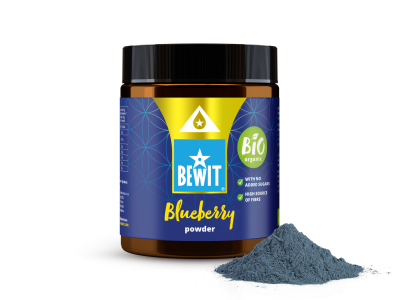BEWIT Perilla oil
Perilla Frutescens Seed Oil
Exotic, fresh, nourishing – that's what perilla oil is. It is excellent for cold pasta dishes, vegetable salads and vegan spreads. To replenish essential fatty acids, you can also take it directly by the spoonful.
Curated reviews by the BEWIT Team
„Tento olej má velmi příjemnou chuť, mňam...klidně bych ho užívala častěji, než je doporučeno. Na hodnocení účinku je po pár dnech brzo, uvidím později...:-)“
Andrea Klečková
Nourishing perilla oil
This nutritious oil from the seeds of exotic perilla stands out for its fresh, unmistakable taste, for which it is excellent in vegetable salads, vegan spreads and pasta dishes served cold. In addition, due to its unique composition, especially the content of essential omega-3 and 6 fatty acids, it is a rightful alternative to flaxseed oil. It is therefore also recommended to take it directly with a spoon.
History
Useful Shiso
Perilla bush, or Shiso, is a very useful shrub native to China, where its seeds and leaves have been used for medicinal purposes for millennia. [1]
Processing method
Cold pressed
Perilla oil is extracted from the seeds of the exotic Asian shrub Perilla frutescens (Perilla frutescens), by the most gentle method, cold pressing. The maximum content of vitamins, phytonutrients and nutrients is preserved in this way.
Ingredients
Exotic alternative to linseed oil
The exclusivity of perilla oil is mainly due to its high content of omega-3 fatty acid α-linolenic acid, which is present in up to 60%, and omega-6 fatty acid linoleic acid, which is present in 15%. Perilla oil is therefore legally an exotic alternative to linseed oil. [2, 3]
Uses
In pasta dishes, salads, spreads
Perilla oil is typical for its fresh, unmistakable taste of herbs. It is used exclusively in cold food preparation, because its beneficial substances are sensitive to high temperatures. It is excellent in vegetable salads, vegan spreads and cold pasta dishes.
It is also recommended to use it directly with a spoon.
Country of origin
China
Sources
[1] Yua, H.; Qiua, J.; Maa, L.; et al. Phytochemical and phytopharmacological review of Perilla frutescens L. (Labiatae), a traditional edible-medicinal herb in China. Food and Chemical Toxicology 2017, 108, 375–391.
[2] Health effects of omega-3,6,9 fatty acids: Perilla frutescens is a good example of plant oils. Orient Pharm Exp Med 2011, (11), 51–59.
[3] Longvah, T.; Deosthale, Y.; et al. Nutritional and short term toxicological evaluation of Perilla seed oil. Food Chem. 2000, 70 (1), 13–16.
100% pure and natural
All ingredients contained in the product are 100% pure and natural and non-synthetic.
Ahinsa
An ethical approach is founded on respect for all forms of life.
Laboratory tested
In our Ostrava laboratory, we meticulously analyse the exact composition and quality of essential oils at an unparalleled level. For more insights into the methods we use to uncover the secrets of these unique gifts of nature, visit here. Or simply take a closer look at a sample of BEWIT Lavender Kashmir essential oil.
Produced with Love
The product has been developed and produced in an atmosphere of love, harmony and with intent of giving benefit to all who use it.
Vegan
This product is suitable for vegans. At no stage during development, testing or production of this item were animal or dairy products used.
ø Nutrition facts
| Per 100 ml | |
|---|---|
| Energy value | 3700 kJ / 900 kcal |
| Fats | 100 g |
| – of which saturates | 5 g |
| – of which monounsaturates | 15 g |
| – of which polyunsaturated fatty acids | 80 g |
| Carbohydrates | 0 g |
| – of which sugars | 0 g |
| Protein | 0 g |
| Salt | 0 g |
fatty acid content
| palmitic acid | 5,7% |
|---|---|
| stearic acid | 2.3% |
| oleic acid | 13.8% |
| linoleic acid | 15.9% |
| alpha-linolenic acid | 60.5% |
Reviews
BEWIT Perilla oil
Want to add your own review? We're interested in your opinion.
Sign in / RegisterTento olej má velmi příjemnou chuť, mňam…klidně bych ho užívala častěji, než je doporučeno. Na hodnocení účinku je po pár dnech brzo, uvidím později…:-)
Did you find this review helpful?


















 Česky
Česky